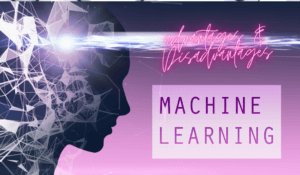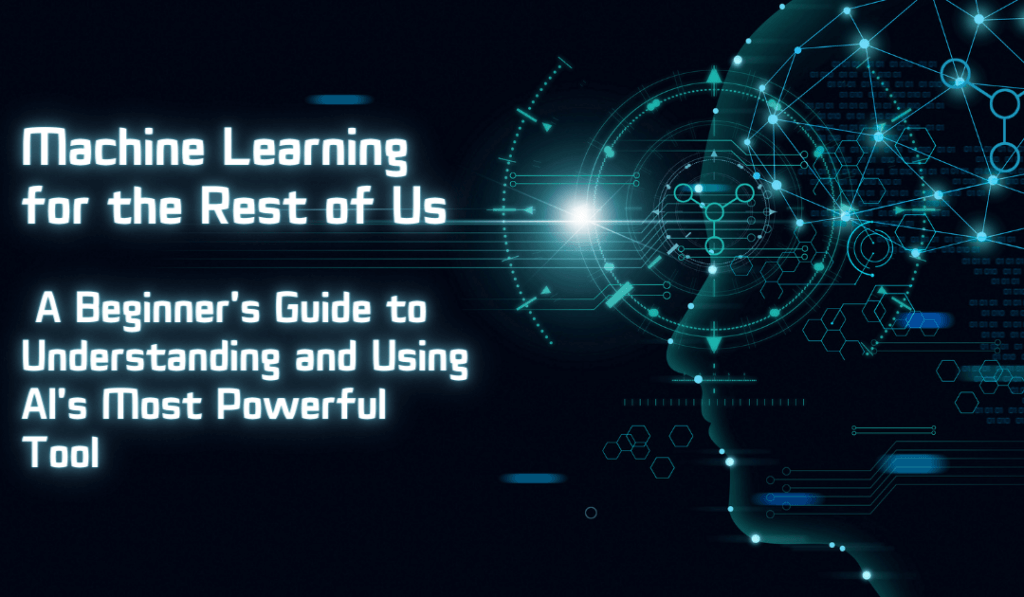Introduction to Machine Learning
Machine learning is an artificial intelligence (AI) technique that allows computer systems to learn and improve from experience without explicit instructions. It enables machines to learn from data, identify patterns, and make decisions with minimal human intervention. The goal of machine learning is to develop algorithms that can automatically improve with experience and perform tasks more accurately. In recent years, machine learning has gained immense popularity and is being used in various industries such as healthcare, finance, transportation, and entertainment.

Types of Machine Learning
There are three main types of machine learning: supervised learning, unsupervised learning, and reinforcement learning.
Supervised Learning
Supervised learning involves training a model on a labeled dataset with known inputs and outputs. The goal is for the model to learn the relationship between the input features and the desired output. Once trained, the model can then make predictions on new, unseen data. This type of learning is commonly used for tasks such as classification and regression.
Unsupervised Learning
Unsupervised learning involves training a model on an unlabeled dataset, where the desired output is not known. The goal of this type of learning is for the model to find patterns and structures within the data without any prior knowledge or labeling. This can be useful in identifying hidden relationships or clusters within large datasets.
Reinforcement Learning
Reinforcement learning involves training a model to make decisions based on its environment and receive rewards or punishments for its actions. The goal is for the model to learn the optimal strategy that will lead to the highest reward.
Applications of Machine Learning
Machine learning has numerous applications in various industries, including:
- Finance: Machine learning algorithms can analyze financial data to identify patterns and make predictions, assisting with investment decisions and risk management.
- Healthcare: Machine learning can analyze medical data to assist in disease diagnosis, drug discovery, and treatment recommendations.
- Marketing: Machine learning can analyze consumer behavior to predict customer preferences and optimize marketing strategies.
- Transportation: Machine learning can be used in self-driving cars to interpret sensor data and make real-time decisions.
- Natural language processing (NLP): Machine learning can analyze and understand human language, enabling virtual assistants such as Siri and Alexa to respond to voice commands.

Advantages of Machine Learning
- Automation: Machine learning automates repetitive tasks, saving time and reducing human error.
- Efficiency: By analyzing large datasets, machine learning can identify patterns and make predictions faster and more accurately than humans.
- Personalization: With the ability to learn from data, machine learning can personalize recommendations and experiences for individual users.
- Uncovering insights: Machine learning can process vast amounts of data to uncover hidden patterns and relationships that may not be apparent to humans.
Disadvantages of Machine Learning
While machine learning offers numerous advantages, it also has certain limitations:
- Data Dependency: Machine learning requires large volumes of data to function effectively. Without sufficient, high-quality data, the models may not learn effectively and could produce inaccurate results.
- Overfitting and Underfitting: Overfitting occurs when a machine learning model learns from the noise in the data to the point where it negatively impacts the performance of the model on new data. Underfitting, on the other hand, happens when the model cannot capture the underlying trend of the data, leading to inaccurate predictions.
- Time and Resource Intensive: Training machine learning models can be time-consuming and resource-intensive, particularly with larger datasets.
- Lack of Transparency: Some machine learning models, particularly in deep learning, can be complex and hard to interpret. This lack of transparency, often referred to as the “black box” problem, can make it difficult to understand how the model is making its decisions.
- Susceptibility to Bias: If the training data contains biases, the machine learning model is likely to learn and perpetuate these biases. This can lead to unfair or discriminatory outcomes in sensitive fields such as hiring or lending.
- Security and Privacy: The use of machine learning can raise security and privacy concerns, particularly when handling sensitive data.
Why Machine Learning Matters

- Informed Decision Making: Machine learning algorithms can analyze vast amounts of data and identify patterns, trends, and correlations that would be impossible for humans to discern. This empowers businesses to make data-driven decisions that are more accurate and effective.
- Predictive Capabilities: By recognizing patterns in historical data, machine learning can make predictions about future events. This is invaluable in many fields, such as finance for forecasting stock trends, or healthcare for predicting disease outbreaks.
- Process Automation: Machine learning can automate tedious, repetitive tasks, freeing up humans to focus on more complex, creative endeavors. This can lead to significant efficiency gains and cost savings for organizations.
- Personalization & Recommendations: Machine learning excels at personalizing user experiences. Whether it’s recommending products based on previous purchases or tailoring a news feed to a user’s interests, machine learning enhances user engagement and satisfaction.
- Anomaly Detection: Machine learning is excellent at detecting anomalies in large datasets. This is useful in numerous fields, from fraud detection in finance, to diagnostic error detection in healthcare.
- Real-time Analysis: Machine learning algorithms can provide real-time insights, which are crucial in areas such as fraud detection or system health monitoring, where timely response is critical.
- Addressing Complex Challenges: Many complex problems, such as speech recognition, image recognition, and natural language processing, are far too complex for traditional algorithms. Machine learning provides a framework for tackling these challenges.
Common Machine Learning Algorithms
Machine Learning encompasses a broad range of algorithms used for data analysis. Each algorithm has unique qualities that make it best suited for certain types of tasks. Here are some of the most common Machine Learning algorithms:
- Linear Regression: This is one of the simplest Machine Learning algorithms. It is used to predict a continuous outcome variable (Y) based on one or more predictor variables (X).
- Logistic Regression: While similar to linear regression, logistic regression is used when the dependent variable is binary. It predicts the probability of occurrence of an event by fitting data to a logistic function.
- Decision Trees: This algorithm constructs a model of decisions based on actual values of attributes in the data. Decision trees are used for both classification and regression tasks.
- Naive Bayes: This is a classification technique based on the Bayes’ Theorem with an assumption of independence between predictors. Despite its simplicity, Naive Bayes can outperform more complex classification methods.
- K-Nearest Neighbors (K-NN): This is an instance-based learning or non-generalizing learning method. It stores instances of training datasets and classifies new instances based on a similarity measure.
- Support Vector Machine (SVM): This is a non-probabilistic binary linear classifier that uses a representation of training data as points in space, separated into categories by a clear gap that is as wide as possible.
- Random Forest: This is an ensemble learning method that operates by constructing a multitude of decision trees at training time. For classification tasks, the output of the random forest is the class selected by most trees.
- Neural Networks: Inspired by the structure of the human brain, neural networks are a series of algorithms that are used to recognize underlying relationships in a set of data through a process that mimics the way the human brain operates.
Understanding these common algorithms will give you a good starting point in your exploration. However, there are many more algorithms and techniques used and new ones are constantly being developed as the field continues to evolve.
Machine Learning vs. Deep Learning vs. Neural Networks
Machine learning, deep learning, and neural networks are interconnected fields that often get conflated, but they each have distinct characteristics.
Machine Learning is a broad umbrella term for methods wherein computer systems can improve their performance on tasks through exposure to data. It includes various techniques such as supervised learning, unsupervised learning, and reinforcement learning.
Deep Learning, a subset of machine learning, uses a layered structure of algorithms called neural networks to guide the computer to learn from data. These algorithms are designed to mimic the human brain’s architecture and function, which is why they’re called ‘neural’. Deep learning models can handle large data sets and complex computations.
Neural Networks, the backbone of deep learning, are algorithms intended to emulate the human brain’s workings. A neural network takes in inputs, processes them in hidden layers using weights that are adjusted during training, and delivers a prediction as output. The ‘deep’ in deep learning refers to the depth of layers in these neural networks.
In summary, all deep learning is machine learning, and all deep learning relies on neural networks. However, not all machine learning is deep learning as it includes algorithms like decision trees and support vector machines that don’t involve neural networks. Therefore, deep learning is a subset of machine learning while neural networks are a critical component of deep learning.
Machine learning operates via a three-step process: data collection, training, and application.

Data Collection: The initial step in machine learning involves collecting and preparing data. This data can come from multiple sources and be in various formats, including numerical data, text data, or even image data. The collected data is then cleaned and transformed into a format that the machine learning algorithms can process.
Training: Once the data is prepared, it’s time to train the model. This involves feeding the data into the algorithm so it can learn and adjust its internal parameters. In supervised learning, the model uses labeled data, which includes both the input and the desired output. The model uses this data to learn the relationship between the input and the output. In unsupervised learning, the model is given unlabeled data and must find patterns and structures on its own. Meanwhile, reinforcement learning involves an agent learning from the environment based on rewards and punishments.
Application: After the model has been trained, it can then be used on new data to make predictions or decisions. It can also continue to learn and adjust its parameters as it receives new data.
This process transforms raw data into actionable insights, enabling machine learning to automate tasks, improve efficiency, and uncover hidden insights. However, it’s important to note that the quality of the output is highly dependent on the quality and quantity of the input data. Therefore, having a robust data collection and preparation process is crucial for effective machine learning.
Future of Machine Learning
The future of machine learning is incredibly promising, with endless possibilities and potential for growth. Here are a few exciting developments to keep an eye on:
- Natural Language Processing (NLP): NLP uses machine learning techniques to analyze and understand human language. This technology has applications in chatbots, virtual assistants, translation tools, and more.
- Edge Computing: Edge computing refers to the processing and analyzing of data at the source, rather than sending it to a central server or cloud. This can significantly improve the speed and efficiency of machine learning models.
- Continual Learning: Continual learning is a technique that enables machine learning models to adapt and learn from new data without forgetting previous information. This would allow models to continuously improve and adapt to changing environments.
- Federated Learning: Federated learning is a privacy-preserving technique where the data used for training remains on the user’s device rather than being sent to a central server. This can address security and privacy concerns while still allowing for model updates and improvements.
It’s clear that the future of machine learning is bright, and we can expect to see even more groundbreaking developments in the coming years. With responsible implementation and continued advancements, machine learning has the potential to transform industries and improve our daily lives. It’s an exciting time to be a part of this rapidly advancing field! So, if you’re interested in pursuing a career in machine learning or simply want to learn more about it, now is the perfect time to dive in and explore all that this field has to offer. So, don’t wait any longer – start your machine learning journey today!
Emerging Trends in Machine Learning
As machine learning continues to evolve, several key trends have begun to emerge:
- Explainable AI (XAI): In response to the “black box” problem, there is a growing interest in developing machine learning models that are not only accurate but also interpretable. The goal of XAI is to create transparent models that can explain their decisions in a way that humans can understand.
- AutoML (Automated Machine Learning): AutoML aims to automate the end-to-end process of machine learning, from data preprocessing and feature selection to model selection and hyperparameter tuning. This can make machine learning more accessible to non-experts and improve efficiency.
- Federated Learning: Federated learning is a distributed machine learning approach that allows models to be trained on local devices or servers holding the data, instead of transferring the data to a central server. This method can improve data privacy and reduce communication costs.
- Edge AI: With the rise of IoT devices, there is an increasing need for machine learning algorithms that can operate on the edge (i.e., on the device itself) rather than in the cloud. Edge AI can reduce latency, save bandwidth, and enhance privacy.
- Transfer Learning: Transfer learning is a technique where a pre-trained model is used as the starting point for a new task. This can save time and computational resources, and can be particularly useful when there is a shortage of labeled training data.
Conclusion
Machine learning is a powerful tool with endless potential for various industries. As technology continues to advance, machine learning will play an increasingly important role in our daily lives, making tasks more efficient and personalized. By understanding the different types of machine learning, its applications, and limitations, we can better utilize this technology and continue to improve and innovate. So, it is essential to stay updated with the latest developments in machine learning and continue to explore its possibilities. Keep learning!
Frequently Asked Questions:
- What is machine learning?
Machine learning is a branch of artificial intelligence (AI) that enables computers to learn from data without explicit programming.
- What are the three main types of machine learning?
The three main types of machine learning are supervised learning, unsupervised learning, and reinforcement learning.
- What are some examples of machine learning applications?
Machine learning applications span various industries, including finance, healthcare, transportation, and entertainment. Examples include fraud detection, medical diagnosis, self-driving cars, and personalized recommendations.
- What are the advantages of machine learning?
Machine learning offers several advantages, such as automation, efficiency, personalization, and uncovering hidden insights.
- What are the disadvantages of machine learning?
Machine learning has certain limitations, including data dependency, overfitting and underfitting, time and resource intensity, lack of transparency, and susceptibility to bias.
- Why is machine learning important?
Machine learning is crucial for informed decision-making, predictive capabilities, process automation, personalization, anomaly detection, and real-time analysis.
- What are some common machine learning algorithms?
It include linear regression, logistic regression, decision trees, naive Bayes, k-nearest neighbors (K-NN), support vector machines (SVM), random forests, and neural networks.
- What is the difference between machine learning, deep learning, and neural networks?
Machine learning is a broad term for algorithms that improve performance from data exposure. Deep learning is a subset of machine learning that uses neural networks, which are inspired by the human brain’s structure. Neural networks are the backbone of deep learning.
- What are the three steps in the machine learning process?
The three steps are data collection, training, and application.
- What are some emerging trends in machine learning?
Emerging trends in machine learning include explainable AI (XAI), automated machine learning (AutoML), federated learning, edge AI, and transfer learning.




